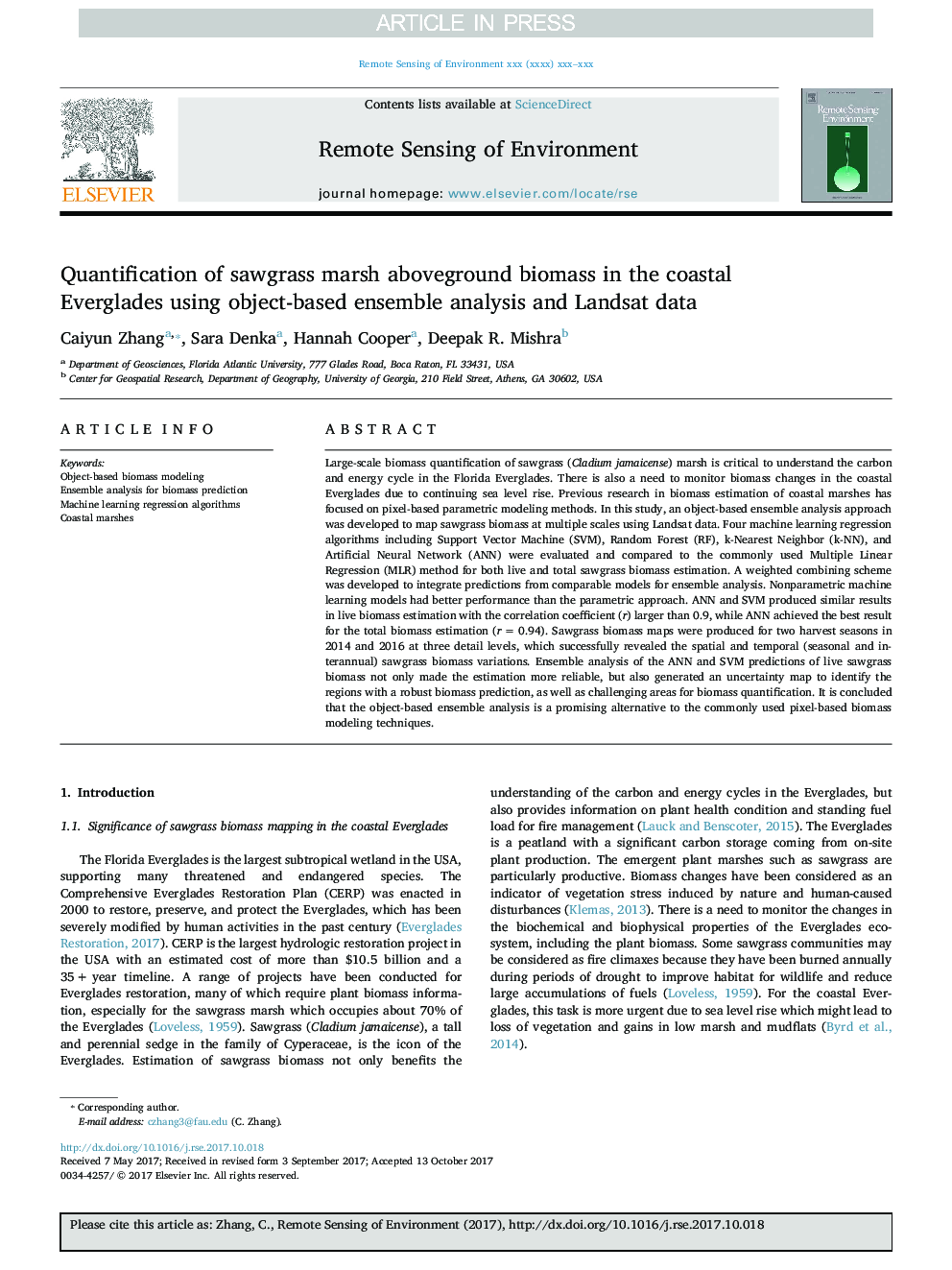| Article ID | Journal | Published Year | Pages | File Type |
|---|---|---|---|---|
| 8866854 | Remote Sensing of Environment | 2018 | 14 Pages |
Abstract
Large-scale biomass quantification of sawgrass (Cladium jamaicense) marsh is critical to understand the carbon and energy cycle in the Florida Everglades. There is also a need to monitor biomass changes in the coastal Everglades due to continuing sea level rise. Previous research in biomass estimation of coastal marshes has focused on pixel-based parametric modeling methods. In this study, an object-based ensemble analysis approach was developed to map sawgrass biomass at multiple scales using Landsat data. Four machine learning regression algorithms including Support Vector Machine (SVM), Random Forest (RF), k-Nearest Neighbor (k-NN), and Artificial Neural Network (ANN) were evaluated and compared to the commonly used Multiple Linear Regression (MLR) method for both live and total sawgrass biomass estimation. A weighted combining scheme was developed to integrate predictions from comparable models for ensemble analysis. Nonparametric machine learning models had better performance than the parametric approach. ANN and SVM produced similar results in live biomass estimation with the correlation coefficient (r) larger than 0.9, while ANN achieved the best result for the total biomass estimation (r = 0.94). Sawgrass biomass maps were produced for two harvest seasons in 2014 and 2016 at three detail levels, which successfully revealed the spatial and temporal (seasonal and interannual) sawgrass biomass variations. Ensemble analysis of the ANN and SVM predictions of live sawgrass biomass not only made the estimation more reliable, but also generated an uncertainty map to identify the regions with a robust biomass prediction, as well as challenging areas for biomass quantification. It is concluded that the object-based ensemble analysis is a promising alternative to the commonly used pixel-based biomass modeling techniques.
Keywords
Related Topics
Physical Sciences and Engineering
Earth and Planetary Sciences
Computers in Earth Sciences
Authors
Caiyun Zhang, Sara Denka, Hannah Cooper, Deepak R. Mishra,
